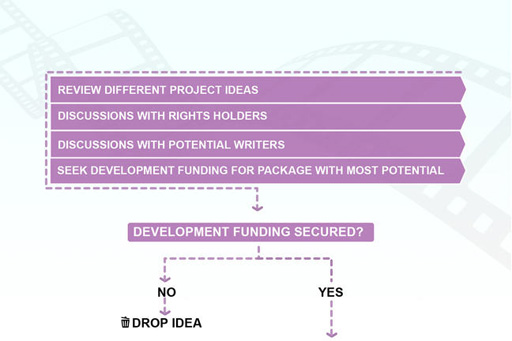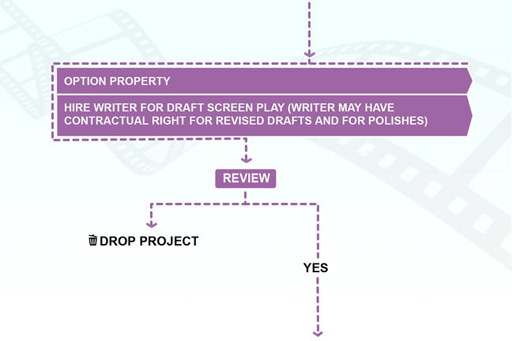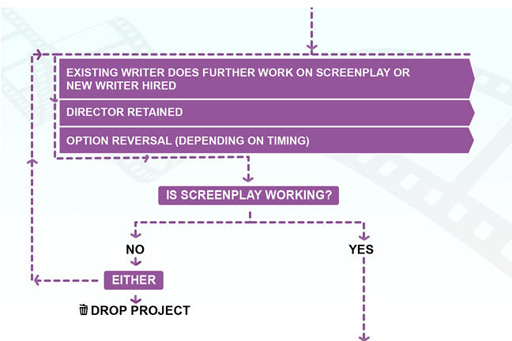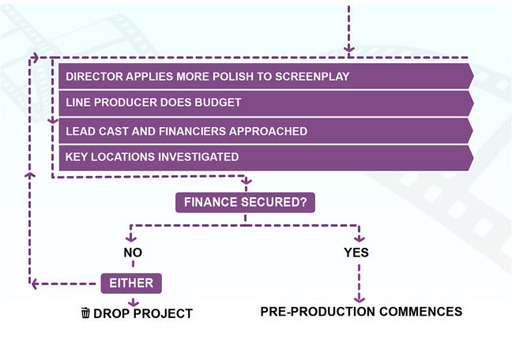2 Development stages
Now let’s take a more detailed look at what is involved in the development process. Because it’s difficult to know whether an idea will develop into a promising feature film project, the development process generally proceeds in stages.
At each stage, the project may get dropped or it may proceed further. In practice, these stages might occur in a number of different ways, but here’s one example of how they might take place.
Stage 1: Secure funding
Take a look at the diagram in Figure 3. It describes the first of a four-stage process which will now be looked at stage by stage. This is a pretty thorough development process – not all films will experience every element of it. There may be some terms you are not familiar with, but these will be covered them later in this week of the course.
The first stage involves coming up with project ideas and determining whether they have the potential to result in good films. If they are based on existing copyrighted material, the likelihood of securing the rights to the material has to be investigated. In addition, most producers are not in a position to pay option costs and writers’ fees themselves, so they will need to secure development funding. If the project is not sufficiently attractive to development funders, the project may be dropped right there.
Stage 2: Initial contracts
In this hypothetical example, stage 2 is where any required rights are secured and the idea is articulated into a first draft of the complete screenplay.
Along the way, the writer will probably have done a treatment, but the first draft is the first chance to see if the project works as a feature film. Again, the project could be dropped here – but it will probably continue to the next stage.
A device that is commonly used to secure rights to an underlying property such as a book or a play is called an option. This is a legal agreement where a producer pays a certain amount to secure the rights for a fixed period (usually 12 or 18 months with the right to renew). The producer also has the right to buy the underlying property rights completely for a pre-determined price (usually a percentage of the film’s production budget). Thus, the producer can work on the film project for a comparatively low upfront investment, knowing no one else can work on the project. The producer also knows that, if he or she is able to develop and finance the film during the period of the option, the price of the property rights is known in advance.
Stage 3: Is it working?
In stage 3 of this example, creative elements start to be attached to the project in addition to the writer.
Usually, the first and key creative element is the director, whose creative vision for the project needs to be incorporated into the screenplay. However, in some circumstances, a key star cast member might come on board before the director.
Stage 4: Can we proceed?
In this hypothetical stage 4, the project starts to move into the pre-pre-production process that was mentioned in Week 1 (more on this later this week).
A budget is prepared, more cast attached, locations are investigated and, hopefully, the finance is secured. If not, more rewriting may be required, or the film may need to be reconfigured at a lower budget so that it can be financed.
If you'd like to see these stages combined into one continuous flowchart, you can download the Complete film development process [Tip: hold Ctrl and click a link to open it in a new tab. (Hide tip)] .
You may have noticed some alternating use of the words ‘financing’ and ‘funding’. For the purposes of this course these are completely interchangeable terms.




